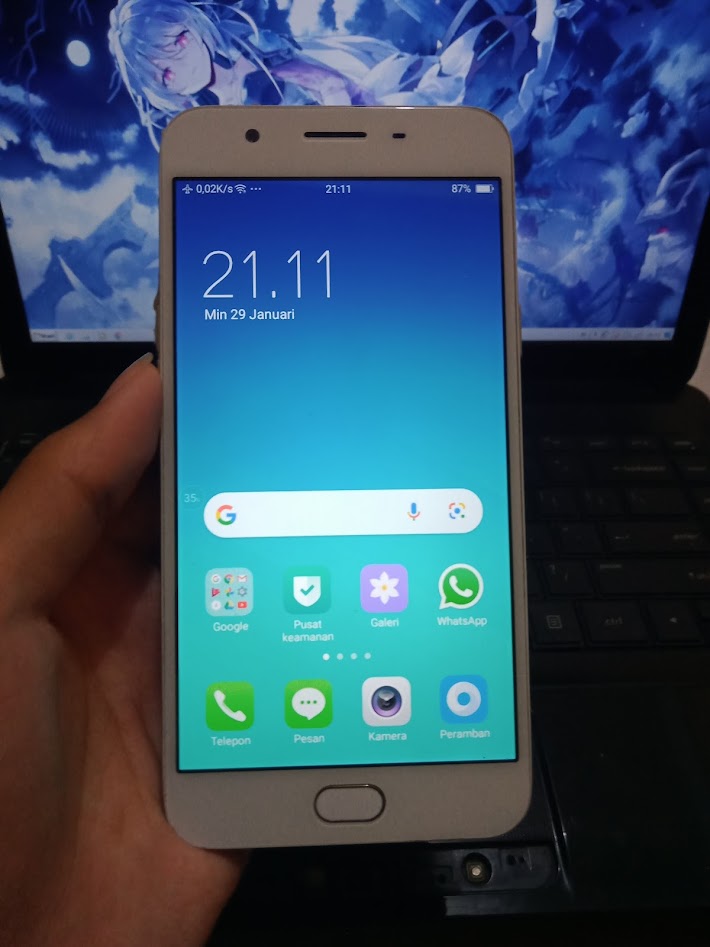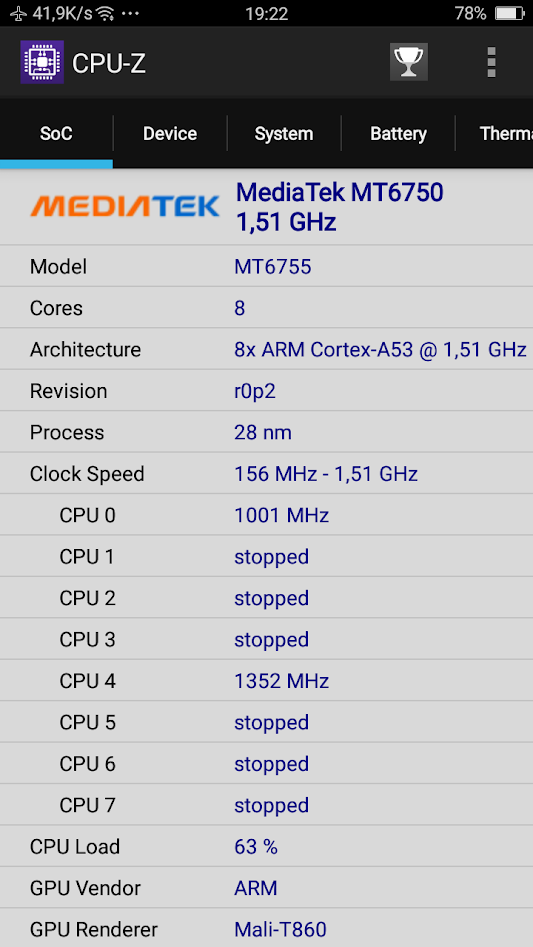Comparing: Intel Core i9 11900F vs MediaTek MT6750
In this comparison, we analyze two Processors: Intel Core i9 11900F and MediaTek MT6750, using synthetic benchmark tests to evaluate their overall performance. This side-by-side comparison helps users understand which hardware delivers better value, speed, and efficiency based on standardized testing. Whether you're building a new system or upgrading an existing one, this benchmark-driven evaluation offers valuable insights to guide your decision.

MediaTek MT6750
| Type: | Processors |
|---|---|
| Brand: | MediaTek |
| Model: | MediaTek MT6750 |
Specification Comparison Table
This specification comparison presents technical details of several devices or components to help you understand the key differences between each option. Use this table as a reference to determine which device best suits your needs.
| Specification | Intel Core i9 11900F | MediaTek MT6750 |
|---|---|---|
| Architecture | x86 | ARM |
| Technology | 14 nm | 28 nm |
| Clock | 2.5 GHz - 5.2 GHz | 1 GHz - 1.5 GHz |
| Core/Thread | 8 / 16 | 8 / 8 |
| Segmen | Desktop | Mobile |
Submission Comparison Table
This submission comparison table displays the number and details of benchmark data submissions from various devices or components. This information helps you understand the performance based on the benchmarks that have been tested, as well as providing an overview of the consistency and popularity of the available benchmark results.
Submission Comparison Chart
This chart visualizes the benchmark scores comparison between two hardware devices based on submitted data.
Media Gallery
A collection of photos of tested hardware. These images can help you identify the physical form, model, and variant of the hardware in question. These photos are from our own documentation, and if they are not available we may not be able to document them.
About Hardware Intel Core i9 11900F
The Intel Core i9-11900F, launched in 2021, is a high-end desktop processor from the 11th generation Rocket Lake family. Featuring 8 cores and 16 threads, this CPU is built for users who demand strong single-core performance in tasks such as gaming, creative workloads, and professional applications. With a base clock speed of 2.5 GHz and a boost clock up to 5.2 GHz via Intel Turbo Boost Max Technology 3.0, the i9-11900F delivers fast responsiveness and excellent performance in lightly threaded scenarios.
Manufactured on the 14nm process, the i9-11900F introduces architectural improvements over its predecessor, including a significant IPC (Instructions Per Cycle) gain, thanks to the new Cypress Cove core design. However, despite these gains, the reliance on the older 14nm node leads to higher power consumption and lower efficiency compared to AMD’s Ryzen 5000 series built on 7nm technology—especially in sustained multi-threaded workloads.
As an “F” series processor, the i9-11900F lacks integrated graphics, meaning it requires a dedicated GPU to operate. This makes it a better fit for gaming PCs or professional workstations that already include a discrete graphics card. While this may not be ideal for users seeking basic systems without a GPU, it allows Intel to price the CPU more competitively.
In benchmarks and real-world performance tests, the Core i9-11900F excels in gaming, offering frame rates comparable to top-tier CPUs when paired with a modern graphics card. It also performs well in productivity tasks such as photo editing, software development, and video rendering—though users working with highly threaded applications might benefit more from CPUs with higher core counts.
Overall, the Intel Core i9-11900F is a solid choice for enthusiast builders, gamers, and users looking for top-tier single-core performance, but it may not be the most efficient option for heavy multitasking or rendering workloads when compared to newer multi-core CPUs.
Monday, 20 June 2022 07:37:04 | Update: 1 month ago
About Hardware MediaTek MT6750
The MediaTek MT6750 is a mid-range mobile System-on-Chip (SoC) released in 2016, commonly found in budget-friendly Android smartphones. It features an octa-core CPU based on the ARM Cortex-A53 architecture, arranged in a big.LITTLE configuration — 4 cores clocked at 1.5 GHz for performance tasks and 4 cores at 1.0 GHz for power efficiency.
Manufactured using the 28nm process, the MT6750 supports a range of mid-tier features such as HD (720p) display output, up to 16MP camera support, and 4G LTE Cat. 6 connectivity. While adequate at the time of release, the 28nm node results in higher power consumption and less efficiency compared to newer SoCs built on smaller processes like 12nm or 7nm.
The integrated Mali-T860 MP2 GPU offers modest graphical performance, capable of handling light gaming, video playback, and everyday apps like messaging and browsing at low to medium graphics settings.
While not designed for heavy multitasking or modern games, the MT6750 still delivers acceptable performance for basic smartphone use, especially in devices with good RAM and storage configurations.
Hardware Detail:
Device: OPPO F1s/A59m (Refurbish)
RAM: 4GB
Storage: 32GB
OS: Android 5.1
Friday, 19 November 2021 16:41:45 | Update: 1 month ago



